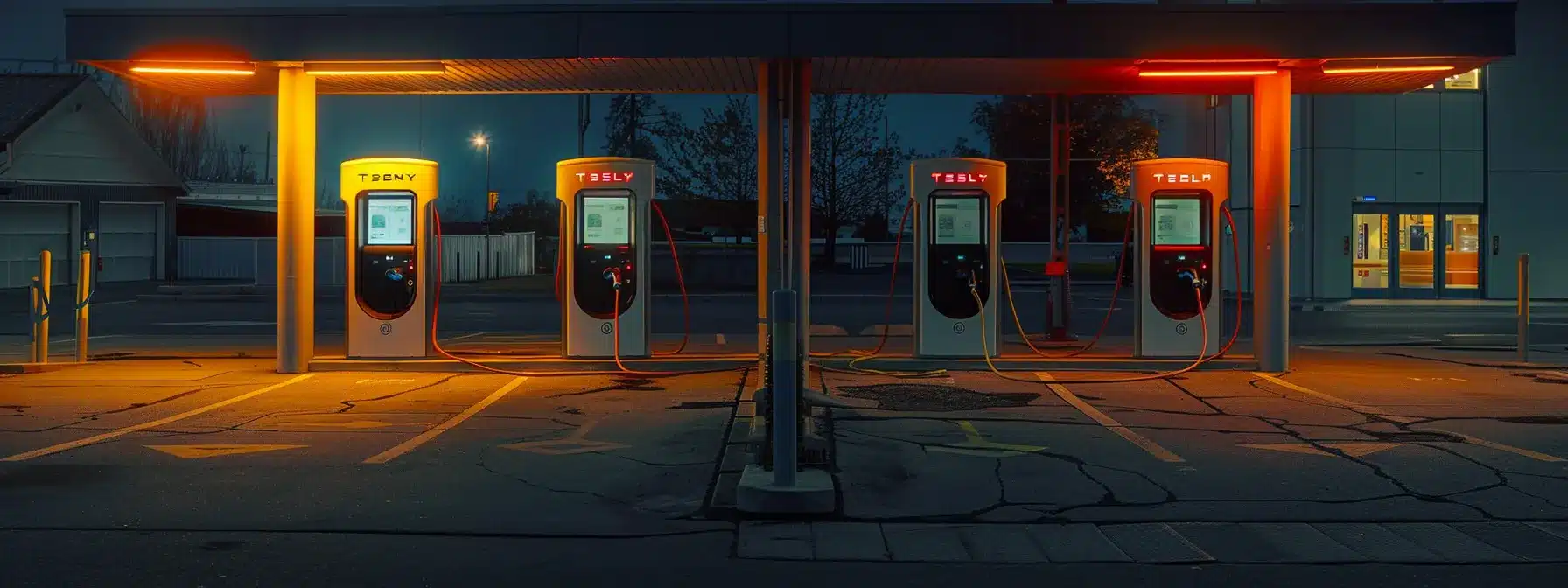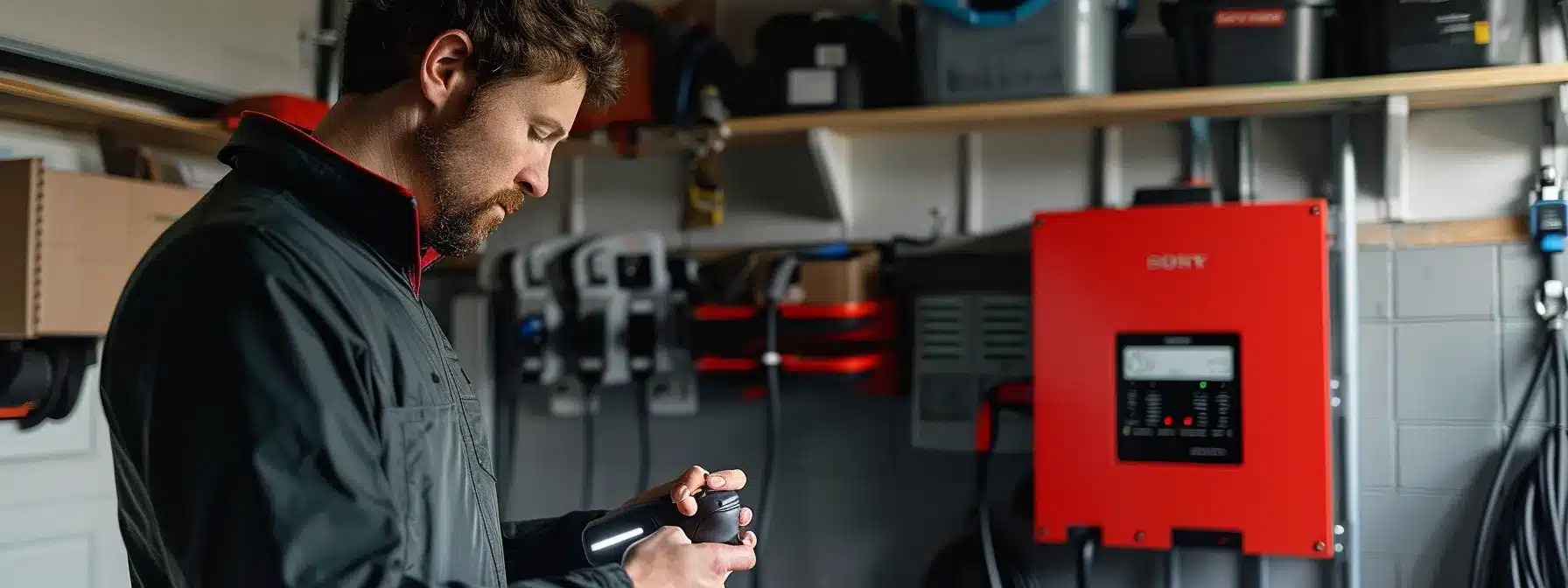EV Charging Station Installation: Your Comprehensive Guide
The rise in electric vehicle ownership has led many homeowners to consider installing EV charging stations. Understanding the types of chargers available, the installation process, and associated costs is essential for making an informed decision. This comprehensive guide will cover different types of EV chargers, provide a step-by-step installation process, and outline cost considerations, including incentives available for homeowners. By engaging with this content, readers will gain valuable insights to navigate the installation process smoothly, whether they are curious about the Tesla wall connector install cost or the role of their electrician in upgrading the distribution board.
Key Takeaways
- Understanding different EV chargers helps in selecting the right option for charging needs
- Level 1 chargers are cost-effective but slow, suitable for short commutes
- Level 2 chargers provide faster charging, ideal for daily use and quicker replenishment
- DC fast chargers deliver rapid charging for quick stop needs, requiring more infrastructure
- Engaging a qualified electrician ensures safe and compliant installation of EV charging stations
Different Types of EV Chargers Explained

Understanding the different types of EV chargers is crucial for effective charging station installation. Level 1 chargers provide basic power supply options suitable for everyday use, while Level 2 chargers offer a faster home charging solution. DC fast chargers deliver rapid charging capabilities, ideal for quick stops. This section compares the charger levels in terms of speed and cost, helping in choosing the right charger for an electric car, factoring in the necessary circuit breaker and overall infrastructure.
Level 1 Chargers and Their Uses
Level 1 chargers are typically the most basic option for electric vehicle (EV) charging, using a standard 120-volt outlet found in most homes. They are ideal for overnight charging in a parking space or residential property, where the vehicle can be plugged in for several hours without concern for time constraints. Though they deliver slower charging speeds compared to Level 2 and DC fast chargers, they are sufficient for drivers who use their vehicles primarily for commuting and can deal with gradual energy replenishment.
Level 2 Chargers for Faster Home Charging
Level 2 chargers provide a significant upgrade for home EV charging, utilizing a 240-volt outlet to deliver a faster and more efficient charging experience. This type of charger can replenish an electric vehicle’s battery in a matter of hours, making it particularly advantageous for daily commuters who need their vehicles ready quickly. Homeowners should consult an experienced ev electrician to assess installation needs, including the necessary circuit breaker and potential fees involved, ensuring that they receive a safe and effective setup tailored to their specific requirements.
DC Fast Chargers Overview
DC fast chargers are designed to provide rapid charging, making them ideal for commercial charging stations or public places where time is of the essence. These chargers operate at higher voltages, allowing them to deliver significant power in a short timeframe, often replenishing an electric vehicle‘s battery to 80% in just 30 minutes. When considering the installation of DC fast chargers, it is crucial to evaluate the site’s electrical infrastructure and necessary upgrades, as these systems require robust electrical capabilities to function effectively.
Comparing Charger Levels for Speed and Cost
When selecting an EV charger, understanding the speed and cost differences among the various types is vital. Level 1 chargers, while the most affordable option, typically offer 2-5 miles of range per hour of charging, making them best suited for minimal daily use. In contrast, Level 2 chargers dramatically increase charging speed, delivering 10-60 miles of range per hour but come with a higher installation cost due to the need for specialized circuits. Meanwhile, DC fast chargers provide the quickest charging option, adding 100+ miles in about 30 minutes, yet they require significant upfront investment and robust electrical infrastructure:
| Charger Type | Charging Speed (Miles/Hour) | Installation Cost |
|---|---|---|
| Level 1 Charger | 2-5 | Low |
| Level 2 Charger | 10-60 | Medium |
| DC Fast Charger | 100+ | High |
Choosing the Right Charger for Your Vehicle
Choosing the right charger for an electric vehicle involves assessing the daily driving habits and charging needs of the user. For those who predominantly use their vehicle for short commutes, a Level 1 charger may suffice, providing convenience without significant investment. However, for individuals with longer travel distances or a need for quicker charging times, Level 2 chargers or even DC fast chargers may be more appropriate, enabling more efficient energy replenishment and enhanced usability during busy schedules.
Understanding EV chargers is just the beginning. Now, it’s time to prepare your home for installation and ensure everything works smoothly.
Preparing Your Home Before Installation

Preparing a home for EV charging station installation involves several crucial steps. First, it’s important to assess the electrical system capacity to handle the new charger. Next, identifying the optimal charger location will enhance accessibility and convenience. Obtaining necessary permits and approvals ensures compliance with local regulations, while planning for potential electrical panel upgrades is vital for future needs. Lastly, considering future charging needs can inform decisions on charger type and placement.
Assessing Your Electrical System Capacity
Assessing the electrical system capacity is a fundamental step in preparing for an EV charging station installation. Homeowners should evaluate whether their existing electrical panel can handle the additional load of an EV charger, taking into account the amperage and voltage requirements of the chosen charger type. Engaging a qualified electrician to conduct a thorough inspection ensures that any necessary upgrades, such as adding a dedicated circuit or replacing an old panel, are addressed promptly, providing a safe and efficient charging solution.
Finding the Optimal Charger Location
Finding the optimal location for an EV charger is essential for convenience and efficiency. Ideally, the charger should be situated close to the vehicle’s parking area to minimize cable length and avoid potential trip hazards. A qualified electrician can assist in evaluating various factors such as existing electrical accessibility, potential weather exposure, and ensuring the location provides easy access for daily charging needs:
| Consideration | Description |
|---|---|
| Proximity to Parking | Ensure the charger is near the usual parking spot for easy access. |
| Electrical Access | Check if the location has a nearby electrical panel to simplify installation. |
| Weather Exposure | Choose a location that protects the charger from harsh weather conditions. |
Obtaining Necessary Permits and Approvals
Obtaining the necessary permits and approvals is a crucial step in the EV charging station installation process. Homeowners must check local regulations, as many municipalities require permits for electrical work, especially for high-voltage installations like Level 2 or DC fast chargers. Engaging with a licensed electrician can help ensure all codes are met and the installation proceeds smoothly, avoiding potential delays and ensuring compliance with safety standards.
Planning for Electrical Panel Upgrades
Planning for electrical panel upgrades is essential when installing an EV charging station to ensure the home can handle the increased electrical demand. Homeowners should consult with a qualified electrician to assess the current panel’s capacity and determine if it meets the requirements of the chosen charger type. By identifying potential upgrades early in the process, individuals can avoid delays and ensure a safe and efficient charging installation tailored to their specific needs.
Considering Future Charging Needs
Considering future charging needs is an integral part of preparing for an EV charging station installation. As electric vehicle technology continues to advance, homeowners may find themselves acquiring additional EVs or upgrading to models with larger batteries requiring more significant charging power. Planning for these potential changes by installing a charger that accommodates higher capacity or ensuring the electrical system has the flexibility for scale can prevent the need for costly upgrades down the line:
| Future Needs Consideration | Description |
|---|---|
| Multiple Vehicles | Prepare for possible future EV purchases by opting for a higher-capacity charger. |
| Battery Technology Advances | Consider chargers that support faster charging rates as battery technologies improve. |
| Home Energy Management | Implement systems that can integrate with home energy management solutions for efficiency. |
With the preparations complete, the time has come to see the installation unfold. Follow this step-by-step guide to ensure a smooth and successful setup.
Step-by-Step Installation Guide

The installation of an EV charging station involves several critical steps that ensure both functionality and safety. This guide covers gathering essential tools and materials necessary for the job, mounting the charging station securely, connecting it to the electrical supply, and testing the charger functionality. Additionally, it will address setting up smart charging features to optimize efficiency, ensuring a comprehensive approach to EV charger installation.
Gathering Essential Tools and Materials
Gathering the essential tools and materials for an EV charging station installation is a crucial first step to ensure a smooth process. Homeowners typically need items such as a drill, screwdrivers, wire strippers, and safety equipment, including gloves and safety glasses. Additionally, having the appropriate electrical components, such as circuit breakers and wiring rated for the specific charger type, helps facilitate a safe and efficient installation, minimizing any potential setbacks that may arise during the setup.
Mounting the Charging Station
Mounting the charging station correctly is essential for both safety and functionality when installing an EV charging station. This process typically involves securing the charger to a wall or post at an appropriate height, ensuring easy access for the vehicle user. Proper alignment and stable mounting not only enhance the charging experience but also prevent potential safety hazards; engaging a qualified electrician at this stage can ensure adherence to local standards and that the charger is positioned for optimal use.
Connecting to the Electrical Supply
Connecting the EV charging station to the electrical supply is a crucial step in the installation process, ensuring the charger functions safely and efficiently. Homeowners should engage a licensed electrician to handle this work, as it involves dealing with high voltage systems that require precise knowledge and adherence to local electrical codes. Properly securing all connections and using the appropriate circuit breakers is vital to prevent electrical hazards and ensure optimal charging performance:
- Assess the electrical panel capacity.
- Use the correct wiring and connectors for the specific charger type.
- Ensure all circuit breakers meet safety standards.
- Test the connections before finalizing the installation.
Testing the Charger Functionality
Testing the functionality of an EV charging station is a critical final step in the installation process. After the charger is properly connected to the electrical system, a licensed electrician should conduct a thorough inspection to confirm that the unit powers on and charges the vehicle as intended. This step not only ensures that the charging station operates correctly but also provides peace of mind for the homeowner, knowing that their investment is functioning safely and efficiently.
Setting Up Smart Charging Features
Setting up smart charging features for an EV charging station enhances the user experience by maximizing convenience and efficiency. Homeowners can benefit from features such as scheduling charging times to take advantage of lower electricity rates during off-peak hours, ensuring cost savings on energy bills. Additionally, integrating smart monitoring systems allows users to track charging sessions and receive notifications, making it easier to manage electric vehicle charging and optimize usage based on their routines and needs.
Installation is just the start. Now it’s time to consider the costs and explore what incentives could ease the burden.
Cost Considerations and Incentives

Understanding the costs associated with EV charging station installation is critical for homeowners. This section will break down the installation expenses, explore available government rebates and credits, review utility company incentive programs, and calculate potential long-term savings. Additionally, evaluating the return on investment will provide practical insights into the financial benefits of adopting electric vehicle charging at home.
Breakdown of Installation Expenses
The breakdown of installation expenses for an EV charging station typically includes several key components, such as the cost of the charger itself, installation fees for a qualified electrician, and potential upgrades to the home’s electrical panel. For example, Level 2 chargers usually range from $500 to $2,000, while installation costs can add an additional $300 to $1,500 depending on the complexity of the wiring and any necessary circuit installations. Understanding these expenses helps homeowners budget effectively and plan for the total investment needed for a safe and functional EV charging setup:
| Expense Type | Estimated Cost |
|---|---|
| EV Charger | $500 – $2,000 |
| Installation Fees | $300 – $1,500 |
| Electrical Panel Upgrade | $1,000+ |
Exploring Government Rebates and Credits
Homeowners looking to install an EV charging station can significantly reduce their expenses by exploring government rebates and tax credits. Many local, state, and federal programs offer financial incentives for both the purchase of charging equipment and the installation process, making the transition to electric vehicles more affordable. For example, the federal tax credit for EV charging stations can cover a portion of installation costs, while some states provide additional rebates that further lower the financial burden on homeowners. These incentives can greatly facilitate investment in sustainable technology, ultimately assisting homeowners in reducing their overall cost of EV charging station installation.
- Government rebates and tax credits can lower installation costs.
- Federal programs often cover a portion of charger and installation expenses.
- State-specific programs may provide additional financial incentives.
- Incentives make investing in electric vehicle technology more affordable.
Utility Company Incentive Programs
Utility company incentive programs play a crucial role in reducing the financial burden associated with installing EV charging stations. Many electric utility providers offer rebates and discounts on installation costs, as well as reduced electricity rates for EV charging, encouraging homeowners to adopt electric vehicle technology. By taking advantage of these programs, individuals can significantly lower their upfront expenses while promoting a cleaner energy future.
Calculating Long-Term Savings
Calculating long-term savings from an EV charging station installation involves assessing both reduced fuel costs and potential tax incentives. By switching from gasoline to electric, vehicle owners can save considerably on fuel expenses, especially as electricity prices are generally lower than gas prices. Additionally, tax credits and rebates can offset initial installation costs, leading to substantial savings over time, ultimately providing a clear financial advantage for homeowners making the transition to electric vehicles.
Evaluating Return on Investment
Evaluating the return on investment (ROI) for an EV charging station installation involves considering both immediate and long-term benefits. Homeowners can expect to lower their fuel costs significantly as electric vehicles typically require less expensive energy compared to gasoline. By factoring in available government incentives and potential savings on daily commuting expenses, the initial investment can yield substantial financial benefits over time, making it a smart choice for environmentally conscious consumers who also wish to reduce their overall utility expenses.
Cost matters, but safety is paramount. As you navigate your electrical needs, knowing the best practices can safeguard your investments and your home.
Safety Tips and Best Practices

When installing an EV charging station, prioritizing safety is essential. Hiring a qualified electrician ensures proper installation according to local codes. Regular maintenance and inspection keep the system functioning safely. Understanding charger specifications prevents mishaps, while avoiding common installation mistakes enhances reliability. Additionally, enhancing safety with protective devices safeguards against electrical hazards, providing peace of mind for users.
Hiring a Qualified Electrician
Hiring a qualified electrician is essential for the successful installation of an EV charging station. A licensed professional possesses the expertise to ensure that the installation adheres to local codes and standards, which is crucial for safety and efficiency. Engaging an experienced electrician can prevent potential hazards and costly mistakes, providing peace of mind for homeowners as they transition to electric vehicle usage.
Regular Maintenance and Inspection
Regular maintenance and inspection of an EV charging station are essential for ensuring optimal performance and safety. Homeowners should schedule periodic checks to identify any wear and tear on the charger, wiring, or connections, as these factors can impact charging efficiency and pose safety hazards. Engaging a qualified electrician for routine inspections can help detect potential issues early on, thus extending the lifespan of the charging equipment and maintaining system reliability.
Understanding Charger Specifications
Understanding charger specifications is vital for ensuring the safe and efficient operation of an EV charging station. Specifications such as voltage, amperage, and connector types directly affect the compatibility with electric vehicles and the charging speed achieved. For instance, knowing whether a charger supports Level 1 or Level 2 charging allows homeowners to make informed decisions based on their driving habits and daily charging needs, ultimately enhancing user experience and device longevity.
Avoiding Common Installation Mistakes
To avoid common installation mistakes when setting up an EV charging station, it is crucial to engage a licensed electrician who understands local codes and requirements. Many homeowners may overlook the assessment of their electrical panel capacity, leading to potential overloads and safety issues. Additionally, placing the charger in a location without easy access to the vehicle can create inconvenience, so careful planning of the installation site is essential for seamless charging experiences.
Enhancing Safety With Protective Devices
Enhancing safety during EV charging station installation involves utilizing protective devices designed to mitigate electrical hazards. Installing ground fault circuit interrupters (GFCIs) can significantly reduce the risk of electric shocks by cutting off power if a fault is detected. Additionally, surge protection devices can safeguard the charging equipment from voltage spikes, ensuring that both the charger and the electric vehicle remain safe during operation.
| Protective Device | Function |
|---|---|
| Ground Fault Circuit Interrupter (GFCI) | Prevents electric shocks by interrupting power when a fault is detected. |
| Surge Protection Device | Protects charging equipment from voltage spikes to avoid damage. |
Now that the focus is on safety tips and best practices, many questions will still remain. The answers may clarify concerns and provide deeper insights into your electrical needs.
Frequently Asked Questions

This section addresses common questions concerning EV charging station installation. Topics include whether individuals can install an EV charger themselves, typical installation costs, and the necessity of upgrading electrical panels. Additionally, it discusses permit requirements and the benefits of home charging, providing practical insights for homeowners considering an electric vehicle charging setup.
Can I Install an EV Charger Myself?
While some homeowners may consider installing an EV charger themselves, it is generally recommended to hire a qualified electrician for this task. EV charger installation involves working with high voltage electrical systems, which require precise knowledge of local electrical codes and safety standards. A licensed electrician can ensure that the installation is done safely and correctly, minimizing the risk of electrical hazards and providing peace of mind.
- Importance of hiring a qualified electrician for safety.
- High voltage systems require technical knowledge.
- Proper installation minimizes risks and ensures compliance with local codes.
How Much Does Installation Typically Cost?
The cost of installing an EV charging station can vary significantly depending on several factors, including the type of charger and any needed electrical upgrades. Typically, homeowners can expect to pay between $500 to $2,000 for the charger itself, with installation fees ranging from $300 to $1,500. Engaging with a licensed electrician can provide a detailed estimate based on specific installation requirements, helping ensure a safe and efficient charging solution that meets individual needs.
Do I Need to Upgrade My Electrical Panel?
Upgrading an electrical panel may be necessary for homeowners installing an EV charging station, particularly if their existing panel cannot support the higher voltage and amperage requirements of modern chargers. This assessment typically involves evaluating the panel’s capacity to handle additional load from the charger, especially for Level 2 or DC fast charging systems. Engaging a qualified electrician can facilitate this process, ensuring that the electrical system is adequate and safe for effective charger operation:
- Assess current panel capacity.
- Determine voltage and amperage requirements for the chosen charger.
- Consult with a licensed electrician for a professional evaluation.
Is a Permit Required for Installation?
Obtaining a permit for EV charging station installation is often required. Many municipalities mandate permits for electrical work, especially for installations involving Level 2 or DC fast chargers due to their higher power demands. Homeowners should consult their local regulations and engage a licensed electrician to ensure compliance, as this not only facilitates a smoother installation process but also guarantees adherence to safety standards.
What Are the Benefits of Home Charging?
Home charging offers numerous advantages for electric vehicle owners, primarily convenience and cost savings. With a dedicated EV charging station installed, vehicle owners can recharge their cars overnight or during off-peak hours, ensuring they start each day with a full battery. This setup eliminates the need for frequent trips to public charging stations and often leads to lower electricity costs, particularly if homeowners take advantage of time-of-use rates offered by their utility companies, making home charging a practical and efficient solution:
| Benefit | Description |
|---|---|
| Convenience | Charge vehicles at home, minimizing trips to public stations. |
| Cost Savings | Lower electricity rates during off-peak hours reduce overall charging costs. |
| Time Efficiency | Focus on daily tasks while the vehicle charges overnight. |
Conclusion
Installing an EV charging station is essential for enhancing convenience and efficiency for electric vehicle owners. By understanding the different charger types, assessing home electrical capacity, and engaging qualified professionals, homeowners can ensure a safe and effective charging solution. Additionally, exploring available incentives and considering future charging needs can significantly reduce installation costs while promoting sustainable practices. Ultimately, a well-planned charging station contributes to a more accessible and environmentally friendly transportation infrastructure.

